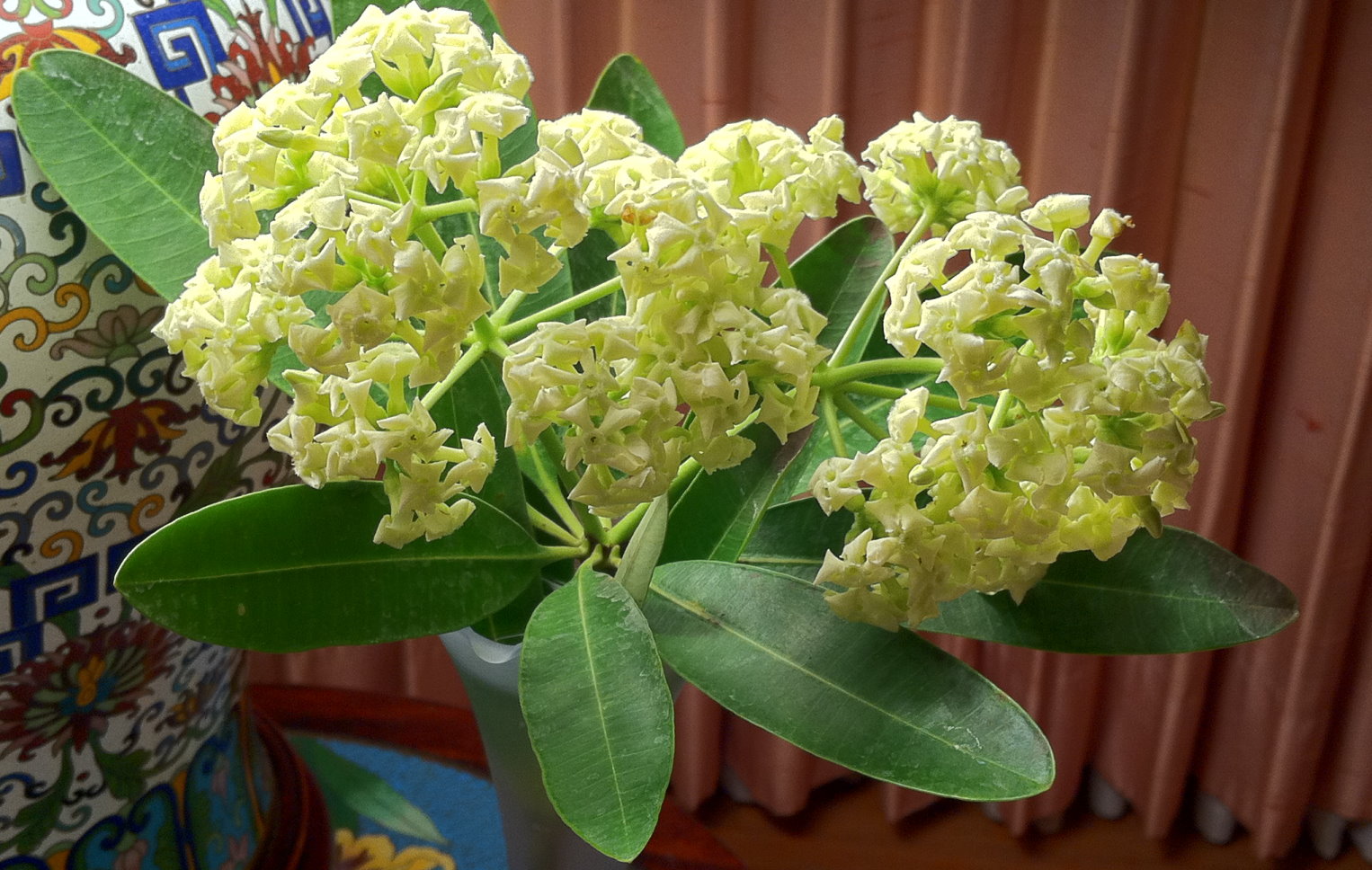How I Did It
Finally I did what I set out to do a few years back, learn the answer to: what does a "Milk Flower" tree in bloom smell like? Legends say it's sweet and romantic... it's pungent and overpowering... people love it... people must close all windows to keep out the nauseating smell... I didn't know what to believe so I gave myself a mission to find out. It's done! First, it wasn't easy to find its scientific name... then I found the wrong species (Devil tree) that didn't have any scent... The real "Milk Flower" tree with the legends is the Alstonia scholaris (Dita bark) and the Fairchild Tropical Botanic Garden has two of them. These are the only two I found in Miami, so far.
These trees bloom in mid October. This year, one has about finished with the flowering stage and is busy making seed pods. The second smaller tree is in its flowering peak right now. These tiny milky white flowers do not have any scent during day time. Easy problem to solve! I managed to get to the trees last night (with full permission, mind you, so I didn't have to break any law) getting wet because of the heavy rain. The tree you saw before, at night, has the sweet and seducing scent, at least to me, and not overpowering at all. At about 8:30 PM, you have to seek it out to realize it's there because of its subtlety. With only one branch in a vase, it's pure perfume when it gets closer to midnight. I would place this scent quite close to Chanel No. 5, but that's subjective. You may disagree, but you'd be hard-pressed to get a chance to experience this to compare notes. It was a lot of work to get to this end. My guess is this can be overpowering if you put a lot of these trees together.
Talking about Chanel No. 5, another legend says it contains essence from the Ylang-Ylang flowers. I would bet you a cookie that it has A. scholaris in it. Perhaps this is a secret of the perfume maker?
So... What's next? I want an A. scholaris tree for myself. Is it too much to ask?



No comments:
Post a Comment